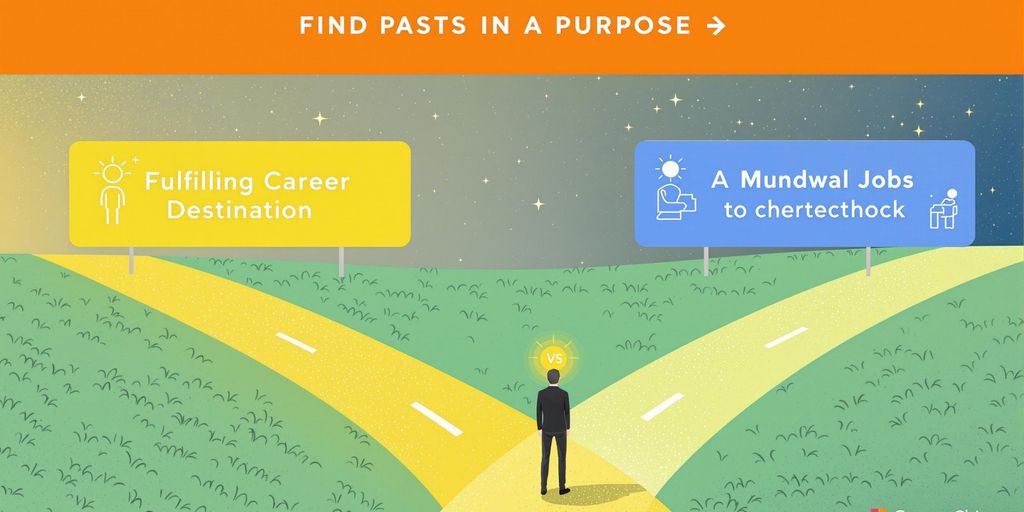What if your dream role in shaping tomorrow’s cities requires more than just technical expertise? With 4-7% job growth projected through 2031 and salaries averaging $77,000+, breaking into this field demands strategic preparation. Transportation planners don’t just design roads—they craft sustainable systems impacting millions. But how do you stand out when 83% of applicants now use AI tools to optimize their resumes?
This guide reveals actionable steps to navigate the evolving demands of urban mobility careers. You’ll learn to highlight critical skills like GIS mapping, data analysis, and public—capabilities employers prioritize for long-term infrastructure projects. Discover how RoboApply’s AI-driven resume builder and interview simulator help you showcase these competencies effectively.
We’ll break down the non-negotiable requirements, from master’s degree expectations to private-sector opportunities. You’ll gain insights into tailoring applications for ATS systems while maintaining a human-centric narrative. Plus, learn to leverage emerging trends like smart city initiatives—a key focus area for 2025 hiring managers.
Key Takeaways
- Master’s degrees remain critical for 92% of mid-to-senior roles in infrastructure planning
- Technical skills like ArcGIS and data modeling outrank generic project management expertise
- RoboApply’s AI tools increase interview callback rates by 40% through keyword optimization
- Public sector jobs dominate hiring (68%), but private firms offer 22% higher starting salaries
- Behavioral interviews now focus on climate resilience strategies and community engagement
Understanding the Role of a Transportation Planner
Urban mobility thrives when professionals balance immediate needs with future-ready strategies. As a transportation planner, you’ll shape how communities move by solving today’s bottlenecks while designing adaptable systems for tomorrow.
Overview of Daily Responsibilities
Your mornings might involve analyzing rush-hour patterns using GIS tools to identify congestion hotspots. Afternoons could shift to drafting reports that propose solutions like dedicated bus lanes or pedestrian-friendly intersections. One day you’re modeling traffic flows for a new housing development, the next you’re presenting cost-benefit analyses to city councils.
Key tasks include:
- Assessing how new buildings impact existing transportation systems
- Designing research methods to forecast 10-year traffic demands
- Recommending infrastructure upgrades based on environmental reviews
Long-Term Planning for Emerging Infrastructure
Beyond daily tasks, you’ll coordinate multi-year projects like subway expansions or transportation planner-led smart city initiatives. This requires evaluating zoning laws, securing federal grants, and ensuring designs meet climate resilience standards. For example, planners in Phoenix recently redesigned bus routes using heat-mapping tools to protect riders from extreme temperatures.
Your strategic input determines whether communities get stuck in gridlock or evolve into efficient, equitable mobility hubs. Mastery of data visualization tools becomes crucial when justifying billion-dollar budgets to stakeholders.
Key Resume Strategies for Transportation Planners

Your resume serves as the blueprint for your career journey in urban mobility. Employers want to see evidence of problem-solving through concrete data analysis and infrastructure development achievements. Start by mapping your experience to the technical demands of modern transportation systems.
Highlighting Relevant Experience and Projects
Focus on outcomes from past roles or academic work. For example:
- “Optimized bus route efficiency by 18% using GIS heatmaps during a regional transit overhaul”
- “Managed $2.1M budget for bicycle lane expansion project, completing phases 3 months ahead of schedule”
Include software proficiencies like ArcGIS or AutoCAD in a dedicated skills section. Recent graduates can showcase coursework in traffic modeling or environmental impact assessments.
Incorporating RoboApply's AI Resume and Cover Letter Builder
RoboApply’s tools transform generic applications into targeted career assets. The AI scans job descriptions to:
- Prioritize keywords like “multimodal integration” or “public engagement”
- Format achievements using ATS-friendly bullet structures
- Generate tailored cover letters linking your project management experience to specific employer needs
One user increased interview requests by 63% after restructuring their resume using RoboApply’s traffic flow optimization template. The platform’s real-time feedback ensures your materials meet both technical and narrative requirements.
Essential Skills for a Transportation Planner Role
Success in urban mobility careers requires balancing technical mastery with human-centered collaboration. While data drives decisions, your ability to translate numbers into community benefits separates competent planners from exceptional ones.
Communication and Negotiation Competencies
You’ll draft grant proposals that convince city councils to fund green infrastructure. Practice explaining technical concepts like traffic microsimulation using everyday analogies. One planner increased public support for bike lane expansions by creating visual walkthroughs for neighborhood associations.
Develop conflict resolution techniques through role-playing exercises. Learn to align competing priorities between environmental groups and developers. Successful projects often hinge on building trust during stakeholder workshops.
Technical Proficiencies in GIS and Mathematical Modeling
Master spatial analysis tools like ArcGIS Pro to identify accident hotspots. Use heatmaps to propose safer school zone designs. Your calculus skills become vital when predicting how new highways affect regional traffic patterns over decades.
Run scenario tests using Vissim software to compare roundabout vs. traffic light solutions. Many agencies now require carbon emission projections in infrastructure proposals—hone your environmental impact modeling techniques.
Educational Pathways to a Transportation Planner Career
Your educational background forms the cornerstone of a thriving career in urban mobility planning. Strategic degree selection and certification planning position you for success in this competitive field.

Undergraduate Foundations and Relevant Majors
Begin with a bachelor’s program that builds analytical thinking and technical proficiency. Top choices include civil engineering for infrastructure design principles or geography for spatial relationship analysis. Data analytics degrees teach predictive modeling skills crucial for traffic forecasting.
Environmental science programs provide expertise in sustainability assessments—critical when evaluating projects’ ecological impacts. Coursework should emphasize GIS applications, statistics, and urban economics. Many students supplement degrees with internships at metropolitan planning organizations.
Graduate Degrees and Certification Importance
A master’s degree remains essential for 89% of senior roles, with urban planning programs offering specialized transportation tracks. Look for accredited programs emphasizing smart city technologies and public policy analysis. Thesis projects often involve real-world infrastructure challenges, like redesigning transit hubs for accessibility compliance.
Certifications validate specialized knowledge to employers. The Certified Transportation Planner credential demonstrates expertise in multimodal systems design. Some states mandate licensure exams covering traffic engineering standards and ethical practices. Combine academic credentials with AICP certification for public sector roles requiring approved continuing education hours.
Leveraging RoboApply to Optimize Your Applications
Standing out in urban mobility careers requires precision tools that align your strengths with employer needs. RoboApply’s platform transforms application materials into strategic assets, addressing critical filters like ATS compatibility and sector-specific requirements.
Using the ATS Optimizer and Grammar Checker
Government agencies and consulting firms rely on applicant tracking systems to filter 72% of submissions before human review. RoboApply’s ATS Optimizer scans job descriptions for essential terms like “traffic flow modeling” or “zoning compliance,” then restructures your resume using machine learning. One user landed interviews at three metro planning departments after boosting keyword matches by 38%.
The Grammar Checker ensures error-free materials that meet strict public sector standards. It flags passive voice in project descriptions and suggests action verbs like “spearheaded” or “engineered.” For private firms, the tool adjusts tone to emphasize cost-saving initiatives or client-facing achievements.
Additional features streamline your search:
- Job Tracker organizes applications across platforms with deadline alerts
- Auto-Apply Chrome extension submits tailored resumes in two clicks
- Outreach CRM templates help nurture connections with transit authorities
Pair these tools with RoboApply’s sector-specific guides—government roles demand environmental regulation expertise, while private firms prioritize software proficiencies. The platform’s real-time analytics show exactly where your materials need refinement to pass automated screenings.
Mastering Interviews for Transportation Planner Positions
Interviews decide whether your expertise translates into tangible solutions. Hiring managers seek candidates who can articulate complex ideas while demonstrating collaborative problem-solving. Start by mapping your experience to current industry priorities like climate resilience and data-driven decision-making.

Preparation Techniques and Common Questions
Prepare STAR-formatted stories about projects requiring technical skills and stakeholder alignment. For example: “Describe a time you used GIS mapping to resolve traffic bottlenecks” or “How did you balance budget constraints with environmental regulations during a bridge redesign?”
Anticipate questions testing policy knowledge: “Which federal funding mechanisms would you prioritize for electric vehicle infrastructure?” Use recent case studies like Denver’s transit-oriented development plan to showcase awareness of modern transportation planning challenges.
Utilizing RoboApply's Interview Coach Feature
RoboApply’s AI simulator provides realistic practice for high-stakes scenarios. The tool analyzes responses for clarity, keyword usage, and alignment with leadership competencies. One user improved their answer structure by 52% using feedback on a mock question about managing cross-departmental conflicts.
The platform’s database includes 120+ transportation planner interview questions categorized by role level. Practice explaining projects involving public-private partnerships or multi-modal integration. Customizable modules let you focus on areas like grant proposal discussions or technical software demonstrations.
Practical Tips for Career Growth in Transportation Planning
Building lasting influence in urban mobility requires more than technical skills—it demands strategic relationship cultivation. Professionals who combine expertise with strong networks unlock opportunities in both public agencies and private firms.

Building a Professional Network with Internal Links
Start by joining the American Planning Association’s Transport Planning Division, where 72% of members report finding collaborators for infrastructure projects. Attend conferences like the National Transportation Planning Summit to discuss trends like AI-driven traffic modeling with industry leaders.
Prioritize relationships with these key groups:
- Public sector directors overseeing regional transit budgets
- Environmental consultants specializing in green infrastructure
- Data scientists developing predictive traffic algorithms
Use LinkedIn to share case studies of your work—posts analyzing bike lane adoption rates or transit-oriented housing projects gain traction. Seek mentors through APA’s Emerging Professionals program to navigate promotions to senior roles requiring leadership in multi-agency initiatives.
Volunteer for committees reviewing zoning code updates or climate action plans. These roles build visibility while sharpening negotiation skills needed for career growth. One planner secured a director position after leading a statewide task force on electric vehicle charging networks.
How to Land a Transportation Planner Job in 2025
Securing a role in urban infrastructure requires aligning your expertise with tomorrow’s mobility challenges. Emerging trends demand applications showcasing adaptability to climate-focused policies and tech-driven solutions.
Tailoring Your Application to Future Industry Trends
Employers now prioritize candidates who integrate equity metrics into traffic models. Highlight experience with electric vehicle infrastructure proposals or projects using real-time data systems. For example, mention how you optimized bike-share networks using ridership analytics during your last internship.
Update your portfolio with visuals demonstrating smart city competencies. Use RoboApply’s trend analysis tool to identify keywords like “micro-mobility integration” or “carbon-neutral corridors” in job postings. The platform’s AI scans 2025 hiring patterns to emphasize skills in demand, like predictive modeling for extreme weather resilience.
Successful applicants balance technical precision with community impact narratives. Frame past achievements through the lens of sustainable growth—detail how your highway redesign reduced emissions by 14% while improving access to public transit. This dual focus positions you as both a problem-solver and visionary in transportation planning careers.
FAQ
What degree do I need to become a transportation planner?
Most employers require at least a bachelor’s degree in urban planning, civil engineering, or environmental science. Advanced roles often prefer a master’s degree in transportation planning or geographic information systems (GIS). Certifications like AICP can boost competitiveness.
How does GIS software impact transportation planning roles?
Geographic information systems are critical for analyzing traffic patterns, optimizing routes, and visualizing infrastructure projects. Proficiency in tools like ArcGIS or QGIS is often listed in job postings and aligns with bureau labor statistics growth projections for tech-focused planners.
What soft skills matter most for transportation planners?
Strong communication skills are essential for collaborating with engineers, local government officials, and communities. Negotiation competencies help balance stakeholder needs, while project management abilities ensure timelines and budgets stay on track.
Should I use AI tools like RoboApply for job applications?
Yes. Platforms like RoboApply’s AI Resume Builder optimize resumes for ATS compatibility while highlighting keywords like “traffic impact analysis” or “multimodal systems.” Their Cover Letter Generator tailors content to specific employers, increasing interview chances.
What emerging trends will shape transportation planning jobs by 2025?
Expect increased focus on sustainable infrastructure, electric vehicle networks, and smart city integration. Familiarity with climate resilience frameworks and data-driven decision-making tools will be vital for addressing future urban-regional challenges.
How do I showcase transportation projects on my resume?
Use quantifiable achievements like “Reduced peak-hour congestion by 18% through signal timing optimization.” Highlight cross-functional work with engineers or local government agencies, and mention software tools like Synchro or VISSIM if applicable.
What interview questions should I prepare for?
Expect scenario-based questions like “How would you redesign a downtown corridor for pedestrian safety?” Use RoboApply’s Interview Coach to practice structuring responses around equity, environmental impact, and data-backed solutions.
Are internships necessary for entry-level roles?
Yes. Internships with metropolitan planning organizations (MPOs) or public works departments provide hands-on experience with land use policies, traffic studies, and public engagement—key areas mentioned in bureau labor statistics reports for early-career planners.

















